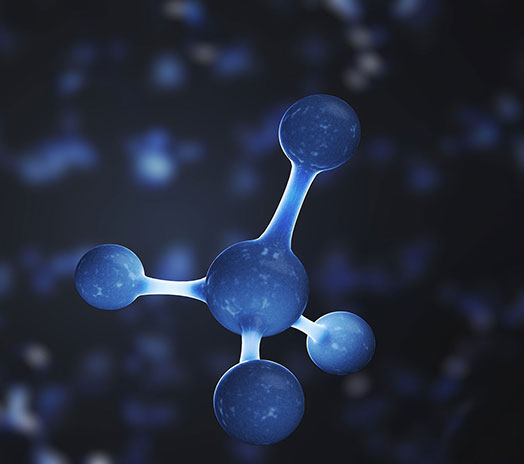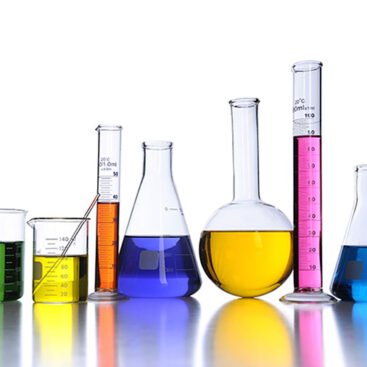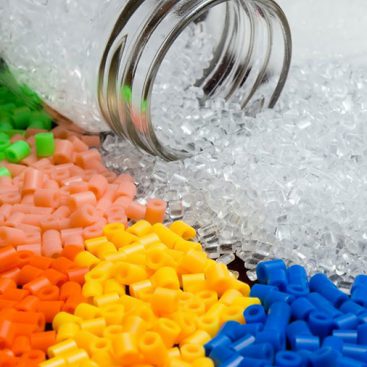Petrochemical Product
Hydrocarbon Materials
You must have heard the name or word hydrocarbon many times since your school days. This word is one of the most used in the chemistry, petrochemical, and oil industry, and every engineer in this field should be familiar with its meaning. This article will give you more information about hydrocarbon and its types.

Hydrocarbons
Hydrocarbons are compounds containing hydrogen and carbon, components of crude oil and natural gas. These compounds are used in fuels, lubricants, as well as raw materials for plastics, fibers, explosives, and industrial chemicals.
Hydrocarbons are found in abundance in nature. In addition to fossil fuels, they are also found in trees and plants. For example, these substances exist in the form of colors called carotene in carrots and green leaves.
Based on tests and research and according to the characteristics of hydrocarbons, they have been divided into two main categories, which include aliphatic and aromatic.
Based on the type of carbon bonds, aliphatics include three main categories:
- Alkanes: contain carbon-carbon single bonds,
- Alkenes: contain carbon-carbon double bonds,
- Alkynes: contain carbon-carbon triple bonds.
Aromatics are aromatic compounds that are divided into two categories:
- benzene aromatics, including benzene ring in their molecular structure,
- aromatics without benzene ring.
Click here to learn more about Aromatic products.
A hydrocarbon molecule can often contain two or more families of these substances. For example, a molecule containing a carbon-carbon triple bond and a benzene ring exhibits properties similar to alkynes and aromatics.
Aliphatic hydrocarbons
As mentioned, aliphatics are classified into three categories: alkanes, alkenes, and alkynes, each of which is discussed separately below:
Alkanes
This class of hydrocarbons is one of the simplest. The carbon atom is bonded with one carbon atom and three hydrogen atoms, which have a covalent bond. The characteristics of alkanes can be mentioned that alkane has the formula CnH2n+2, and it belongs to the group of unsaturated hydrocarbons that do not have multiple bonds in their structure.
They also have a homologous structure, which means that one member differs from another to a certain degree. This type of hydrocarbon can be seen in liquid, solid, and colorless gas forms.
If their chain length increases at the boiling and melting points, their gravity also increases. These types are non-polar and will easily dissolve in solvents such as benzene and ether. Among the existing alkanes, the most important ones can be mentioned. Alkanes such as:
Methane (CH4), Propane (C3H8), Pentane (C5H12), Ethane (C2H6), Hexane (C6H14), Octane (C8H18), Butane (C4H10), Nonane (C9H20), Decane (C10H22), Heptane (C7H16)
Alkanes
This type is not saturated with categories with a carbon-carbon double bond structure, While one of the carbons has an OH- bond. Also, this type of hydrocarbon can receive a hydrogen atom and turn into a saturated alkane.
Compared to alkanes, this group of hydrocarbons has a lower polarity and is insoluble in solvents such as chloroform, ether, or water. Also, when the chain length increases, it has high boiling points and decreases when it is branched. It is similar to alkane in many physical properties. It is used to prevent fruits from spoiling.
Among alkenes, the most important ones are ethylene (C2H4), butene (C4H8), and propene (C3H6).
Alkynes
This group of hydrocarbons is unsaturated and has a carbon-carbon triple bond. This type of hydrocarbon has little polarity compared to alkenes and alkanes. In these conditions, they dissolve in solvents such as benzene, ether, and carbon tetrachloride, but they do not dissolve in water; because their polarity is low compared to water.
Alkynes’ boiling and melting points are the same as alkenes, and their acid strength is higher than alkenes and alkanes. This type of aliphatic hydrocarbon is considered beneficial because of its higher electronegativity.
They can protonate strong bases such as sodium amide and convert them into alkynyl anions.
Cycloalkanes
There are countless organic compounds in which repeating units of carbon atoms are linked together to form a carbon ring. Cycloalkanes are saturated hydrocarbons containing a ring whose chemical formula is CnH2n.
Cycloalkanes can be represented as a polygon, with a carbon atom in each corner of this polygon, forming a bond with the required number of hydrogen atoms to complete its four bonds.
Aromatic hydrocarbons
Benzene, toluene, and similar hydrocarbons are called aromatic, although they do not have a pleasant smell because they are derived from aromatic substances. The word aromatic refers to any compound whose structure includes benzene or is derived from benzene.
Compounds with a benzene ring are highly stable and known as benzene aromatics or Arenes. Compounds that do not have a benzene ring but have high stability are known as non-benzene aromatic compounds.
Among the essential features of this class of hydrocarbons, the following can be mentioned:
- Solid or liquid at room temperature
- Insoluble in water
- Participation in catalytic hydrogenation reactions
Aromatic hydrocarbon burning
Materials such as paraffin, methane, or benzene are hydrocarbon materials that burn in the vicinity of oxygen and produce carbon dioxide and water vapor. Aromatic types of hydrocarbons, which have several rings, have organic compounds from two to seven benzene rings.
Characteristics of aromatic compounds
These types of compounds have a pleasant and aromatic smell. They follow Hoeckel’s principles of 4n+2 and have carcinogenic compounds. The polarity of this type of material determines its boiling point. The more electrons these compounds have, the higher the energy released from them. Finally, they will have more appropriate relative stability.
Hydrocarbon application
Almost all hydrocarbons can be found in oil and natural gas. The use of aromatics is generally as a chemical solvent. Sometimes aromatics are used in the structure of gasoline and oil. Other benefits of hydrocarbons include natural raw rubber, 98% of which is a hydrocarbon polymer. Hydrocarbons are the main constituents of fossil fuels, and They release energy during combustion.
Hydrocarbon compounds are also used in many materials and devices that humans can use daily; such as:
- Lubricating oils
- Greases
- Solvents
- Fuels
- Wax
- Asphalt
- Makeup Material
- Plastic Materials
- Antiseptics
- Generating enough heat to weld the parts
- Synthetic Fibers
- Explosives and Chemicals
We at Iran Petroleum are by your side to supply the highest quality and rarest Iranian petrochemical products. Our professional consultants will accompany you in this way.





Leave a Reply